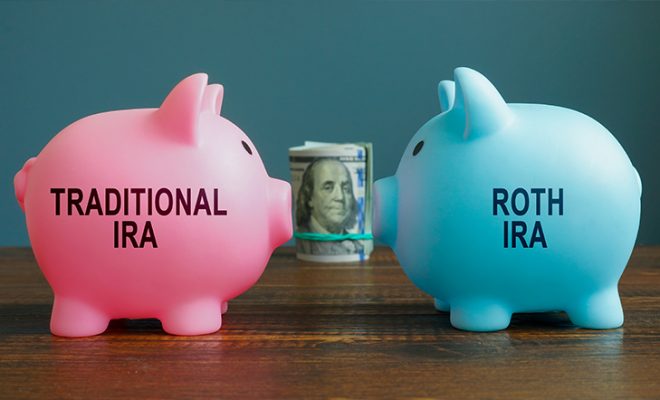Retirement Income Planning Tips for a Secure Retirement

Most people consider their retirement to consist of a relaxed lifestyle with ample time to enjoy things and pursue hobbies, travel the world, spend time with friends and family, or take up recreational activities. However, at the same time, apprehension and stress about the ability to afford retirement are also concerns that emerge when nearing retirement. For a secure retirement, it is important to build a regular source of income without the need to go to work each day. With adequate retirement planning, it is possible to structure your retirement nest egg to get a steady source of cash during the non-working years of your life. You can develop a concrete strategy using different income sources to ensure you enjoy your retired years.
Here are some retirement income planning tips you can use to ensure a secure retirement:
- Create bond ladders: Creating a bond ladder can be a valuable decision for your retired years. You can purchase multiple bonds with staggered maturity intervals to create a bond ladder. This helps you to diversify bond investments as per their maturity dates to reduce risk and offer a predictable source of income in retirement. Bonds pay out interest twice a year, which helps to create a steady flow of cash. Moreover, since the rate of interest on bonds is locked at the time of purchase, you know precisely the amount of income you will receive in the future. In a bond ladder, as each bond matures, another one is purchased to keep the ladder extended by keeping the maturity date of the new bonds further in the future. You can choose from a variety of bonds, as per their credit risk rating, available in the market. For example, if you wish to invest $9,00,000 in bonds by applying the bond ladder strategy, you would need to divide your savings into different maturity date bonds. Assuming you divide it as per a two-, four-, six-, and eight-year maturity date. Once the first bond matures after two years, you can reinvest it beyond the longest lock-in period of the ladder, which is eight years. Be careful when choosing the maturity periods of the bonds. Ideally, the bonds should mature when you are most likely to require the income. Further, there are different types of bonds, so you can easily choose between government bonds, corporate bonds, Treasury securities, etc. However, you should be cautious when investing in bond ladders as they might not be able to keep pace with inflation. You might need to invest a large sum of money to generate the retirement income you need.
- Be careful about your Social Security withdrawals: Social Security is the foundation source of income for most retirees in America. However, when you decide to take your Social Security benefit, the withdrawals can greatly impact your retirement. You might be tempted to take your Social Security benefit as soon as you become eligible (typically at the age of 62). But it is advisable to delay your withdrawal for as long as possible. Taking out money from your Social Security account early could prove costly. You are entitled to full benefits when you reach your full retirement age (FRA). FRA ranges from 66 to 67, according to the year of your birth. If you delay your withdrawals up to your FRA or up to the age of 70, your Social Security benefit amount increases. This is because Social Security gets a cost-of-living adjustment each year, which helps to increase your corpus. However, if you withdraw your benefits early, they are reduced by a small percentage for each month before your full retirement age. For example, if you withdraw a year later than your official retirement age, you can get 108% of your Social Security monthly benefit. Furthermore, you can add more than 50% to your benefit if you delay the withdrawals until the age of 70. Overall, starting to take benefits at a later age helps to give you more guaranteed income over your lifetime. That said, there are other factors to consider when withdrawing your Social Security benefits. For example, if you start to take withdrawals before your FRA, you might get a smaller amount, but you will receive it for a longer period. Alternatively, you will receive a larger monthly cheque but for a shorter duration, if you wait until your FRA or later. Hence, you should consider factors such as your working years, life expectancy, health insurance, etc., when making your decision regarding the Social Security benefit withdrawal.
- Be smart with your investment portfolio: As you create your retirement income plan, it is important to include investments that offer growth potential. Such instruments allow you to keep up with inflation over the years and not just rely on a stable source of income. When you create a smart investment portfolio, you can easily outpace inflation and pay for those things you always dreamt of doing during your retired years. You could go on vacations, pursue hobbies, and do so much more without worrying about outliving your savings. It is good to pay for these retirement activities from your investment earnings, as you can easily cut these expenses down if the market performs poorly later. To create a sound investment portfolio, consider including a mix of stocks, bonds, and cash in your portfolio as per your time horizon, financial situation as well as risk tolerance. An overly conservative portfolio can cause you to miss out on the long-term growth potential of stocks. But a highly aggressive portfolio can cause you to take on more risk, especially during volatile market conditions. You should carefully research your investment options and select the ones that best meet your needs and goals. As a wise investor, you should also monitor your investments and rebalance your portfolio from time to time. You should also manage the taxes of your investments. For example, an employee stock plan has the potential to offer high returns, but it can also trigger an income tax event. This, in turn, can have a detrimental impact on your Social Security payments and other aspects of your retirement plans.
- Be flexible and update your retirement income plan over time: Your retirement income plan should be adaptable to life’s curveballs, including unforeseen events. For example, five years after you retire, your parents might leave an inheritance for you, or your parents might start to live with you. In such situations, your retirement income plan should be flexible to make these adjustments along the way. This is possible when you combine income from different sources to create a reliable but diversified retirement income stream. Supplementary income sources can assist in reducing risks, such as inflation, longevity, and market volatility. Alternatively, your investment portfolio can give you high returns along with the flexibility to change the amount you withdraw each month. Even though this option does not guarantee income for life, it allows you to adjust your income over time to meet increased expenses during retirement. Moreover, a flexible retirement income plan comes in handy when you begin to take RMDs (Required Minimum Distributions) from your retirement savings accounts once you reach the age of 72. RMDs can shoot up your retirement income, leading to an increased tax liability during retirement. However, if you have a flexible retirement income plan, you can reduce your income from other sources, such as investment withdrawals, to keep your taxes low. It is beneficial to refine your retirement income plan over time and accommodate these changes to maximize income as well as reduce taxes and risk.
To sum it up
Retirement is the beginning of your golden years. However, the transition from working life to non-working life can be slightly challenging. Efficient retirement income planning guarantees you a financially secure retirement. The objective is to save diligently, invest wisely, and create a comprehensive and smart payout option for your retired years. Having different sources of income such as a bond ladder, Social Security benefits, retirement savings account, etc., can help you safeguard your retirement income even if one of your investments delivers unsatisfactory returns. It is also advisable to consult a professional financial advisor to create an ideal retirement income plan as per your needs, financial objective, retirement goals, and risk tolerance.
To further understand how to plan financially for a secure retirement, visit Dash Investments or email me directly at dash@dashinvestments.com.
About Dash Investments
Dash Investments is privately owned by Jonathan Dash and is an independent investment advisory firm, managing private client accounts for individuals and families across America. As a Registered Investment Advisor (RIA) firm with the SEC, they are fiduciaries who put clients’ interests ahead of everything else.
Dash Investments offers a full range of investment advisory and financial services, which are tailored to each client’s unique needs providing institutional-caliber money management services that are based upon a solid, proven research approach. In addition, each client receives comprehensive financial planning to ensure they are moving toward their financial goals.
CEO & Chief Investment Officer Jonathan Dash has been profiled by The Wall Street Journal, Barron’s, and CNBC as a leader in the investment industry with a track record of creating value for his firm’s clients.










